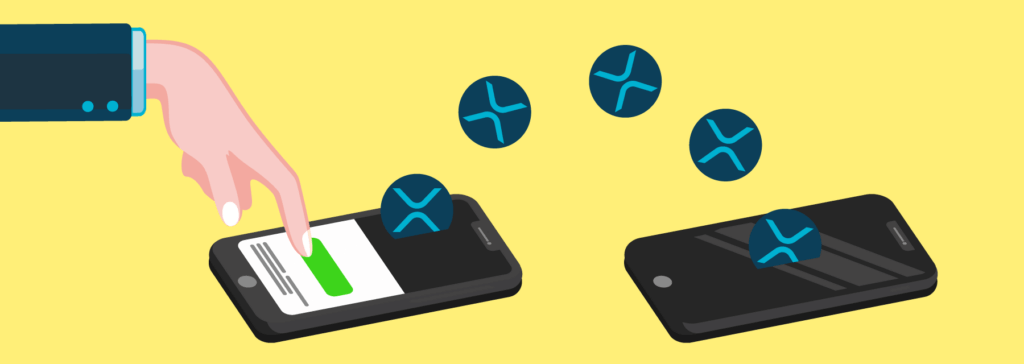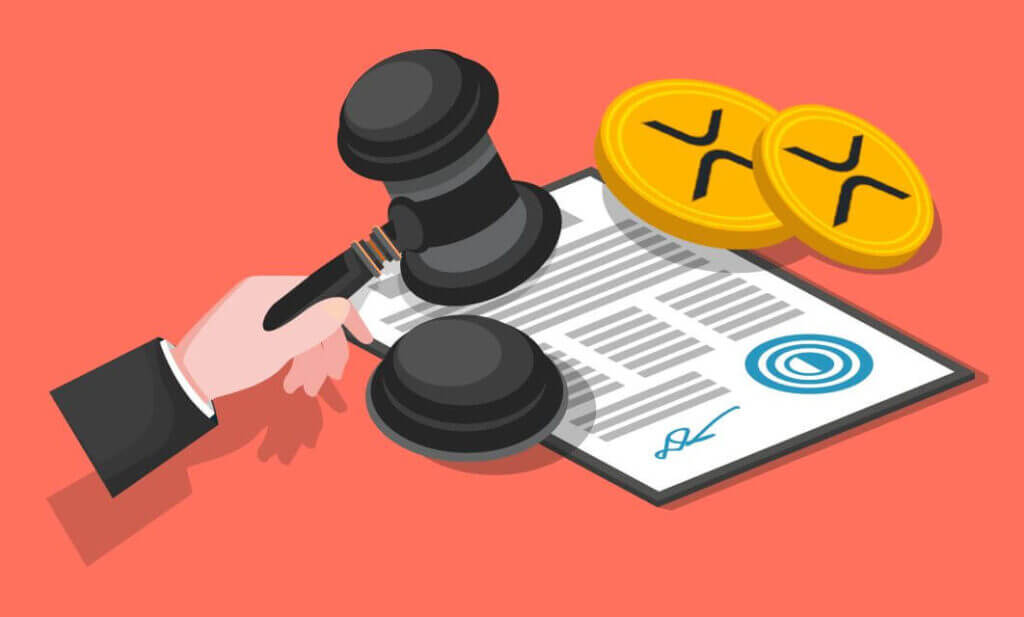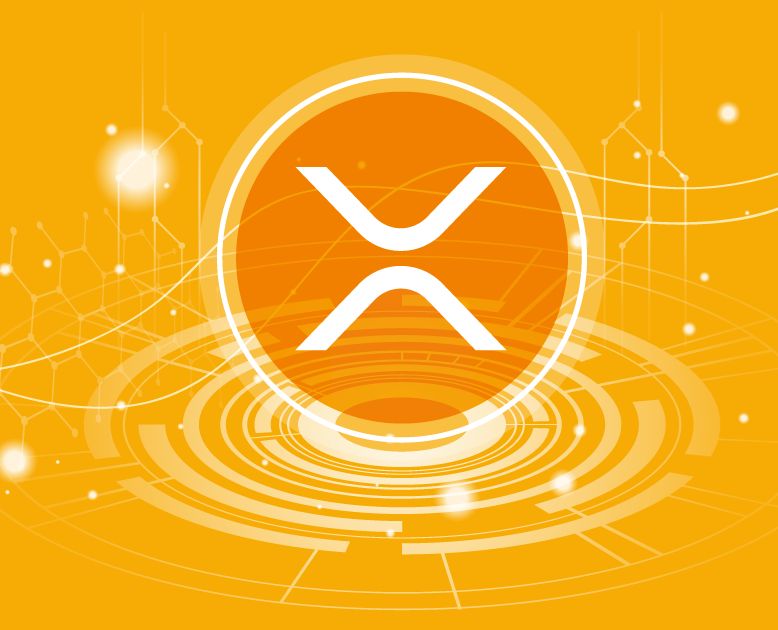XRP (XRP)
The SWIFT Killer from RippleRipple is a real-time global payments and exchange system designed to offer an alternative to the legacy SWIFT system. Based on a distributed open source protocol, Ripple’s native cryptocurrency is called XRP. In this guide, we’ll tell you everything you need to know about Ripple and XRP.

What is Ripple (XRP)?
The idea for a new, more efficient blockchain-based real-time gross settlement system, currency exchange, and remittance network, to replace SWIFT (Society for Worldwide Interbank Financial Telecommunication), was devised by Jed McCaleb – an American programmer and entrepreneur.
McCaleb was something of a trailblazer in the peer-to-peer scene and was instrumental in creating the decentralised web emerging today. In the early 2000’s he created the peer-to-peer eDonkey and Overnet networks, and in 2007 started working on a trading site for Magic: The Gathering cards. However, in late 2010, the card trading site was transformed into a Bitcoin exchange. And its name? Mtgox.com.
Luckily for McCaleb, he sold the ill-fated Mtgox exchange in 2011, several years before its dramatic collapse in 2014. But, McCaleb had clearly got the crypto bug. In the same year as Mtgox’s demise, he started to develop the Ripple protocol – a new digital currency system that would see transactions verified by network consensus, as opposed to proof-of-work like Bitcoin.
To develop Ripple, McCaleb teamed up with Arthur Britto, David Schwartz, and Ryan Fugger (who had developed a payments system called OpenCoin). They formed the Opencoin company, but in 2014 McCaleb left to co-found the Stellar Development Foundation, which developed the Stellar open source protocol. However, OpenCoin rebranded as Ripple, and development continued, seeing the launch of a native cryptocurrency called XRP. The project gained considerable attention from the banking industry, and by 2018 more than 100 banks were partnered with Ripple – mostly using the company’s XCurrent messaging technology.
In May 2018, the US Securities and Exchange Commission (SEC), initiated a case against Ripple Labs, its CEO Brad Garlinghouse, and co-founder Chris Larson. The SEC alleged that XRP tokens were securities, and hence the ICO (initial coin offering) had been an unlicensed securities sale. In late 2022, the case was still unresolved, with Ripple allegedly committing a $100M war chest to fight its corner. Needless to say, until the case is resolved, the institutional adoption of Ripple and XRP has stalled.
| Did you know? Unlike most other cryptocurrencies, you can’t mine or stake XRP. All the XRP that will ever exist, which is 100 billion, were created at launch. Ripple Labs itself holds a large proportion of that in ledger escrow and releases it gradually. Source: Ripple.com |
Ripple (XRP) Basics
Firstly, it’s important to understand that Ripple is the payment network, and XRP is the cryptocurrency. So, on most crypto exchanges, you’ll want to look for XRP, not Ripple. Secondly, although the XRP ledger itself is decentralised, in practice it is essentially owned and operated by a centralised private company, Ripple Labs.
Ripple Blockchain
XRP Ledger, the blockchain that underpins Ripple, uses a consensus mechanism called the Ripple Protocol Consensus Algorithm (RPCA). Almost 1,000 nodes make up the network, and they are indeed geographically decentralised. However, transactions are finalised by just 33 group-selected nodes, and Ripple itself has a major influence on which nodes tend to be selected. Ripple itself also directly controls six nodes and indirectly controls four others.
XRP Supply
Like Bitcoin and many other cryptocurrencies, XRP has a limited total supply. But, unlike Bitcoin’s 21 million limit, XRP’s is a massive 100 billion – and this was ‘instamined’, or issued in its entirety when it launched. This obviously keeps the price of XRP much lower than many other cryptos, but this isn’t really a problem as XRP’s primary use is making the Ripple payments and exchange system work, rather than as an investment vehicle.
Ripple (XRP) Adoption & Usability

Until the SEC hit Ripple Labs and its executives with legal action in 2018, things were looking great for Ripple and XRP. For a while, it seemed like Ripple could actually replace the archaic and inefficient SWIFT network for transfers between financial institutions like banks. This institutional interest also helped drive the growth of a strong XRP retail investor community around the world.
However, although XRP is still a widely accepted cryptocurrency (the 6th biggest by market capitalization at the time of writing), until the legal action with the SEC is resolved, and the exact status of XRP as a security or commodity is confirmed, Ripple and XRP are in something of a Purgatory, and unable to make much headway in terms of adoption.
An interesting potential use case for Ripple and XRP is as the basis, or template, for Central Bank Digital Currencies (CBDCs). These are being proposed by many countries, as a solution to making financial systems more efficient. However, most crypto fans are opposed to the idea of CBDCs because they would actually centralise control even more, and give governments complete control over citizens’ lives.
Ripple Network Fees & Speed
From the outset, the Ripple network and XRP were designed for lightning-fast, ultra-cheap transactions. At the time of writing, a typical XRP transaction took three to five seconds and cost something like US$0.0002, making it essentially free. Although, during times of higher network use, transaction fees can be higher – for example hitting around $0.018 once or twice. Still, we’d say that’s pretty cheap!
| As of 06 October, 2022, crypto giant Binance was the largest holder of XRP, with over 36% of the total circulating supply – amounting to 99,896,699 XRP tokens. Source: Coincarp.com |
Ripple (XRP) Security and Safety
The Ripple network itself has proven itself highly secure and safe so far, although it does not provide the same level of privacy as truly decentralised cryptos. Also, it’s worth noting that, because the network is somewhat centralised, it opens the possibility of market manipulation.
Still, the main security threats when using XRP come from interactions with third parties, for example, exchanges and wallets, which are often the target of hackers.
Security and safety tips:
- Don’t leave your XRP on exchanges. Use exchanges for buying and selling only. Always transfer your crypto to a local wallet for short-term storage.
- For long-term storage, keep your crypto in a hard wallet.
- Always keep your wallet keys in multiple safe places – they cannot be recovered.
- Never tell anyone about your crypto holdings. No matter how secure your storage is, if you or your loved ones are physically threatened, you’ll probably hand over your personal keys.
Ripple (XRP) Volatility

Immediately prior to the SEC case being launched against Ripple, XRP witnessed a truly staggering price spike, going from about $0.24 on 10 December 2017, to $3.40 on 7 January 2018. But, it then promptly crashed, and by the end of the year was trading at about $0.35. Since then, it has struggled to make progress because of the regulatory uncertainty, although it did climb back to almost $2 during the great 2021 crypto bull run, before dropping again. The long-term prospects for XRP are heavily dependent on the outcome of the SEC case.
Final Word on Ripple (XRP)
Ripple and XRP evoke strong emotions among many crypto enthusiasts. The legal battle between Ripple and the SEC has become something of a cause célèbre in the crypto space, and understandably so. For, at its core, the original idea behind Ripple was to replace a pivotal part of the existing global financial system with something better and fairer – and something that could benefit ordinary people as well as bankers.
If things go right for Ripple against the SEC, and the system and crypto can be unleashed to reach their full potential, they could well help transform the financial world forever. It could mean no more expensive and slow SWIFT transfers for international and interbank transactions and could open the way to widespread retail adoption of XRP as a payment currency.
Similar Cryptos to XRP
When it comes to how XRP fits into the wider cryptocurrency space, it’s difficult to find any exact parallels. With its semi-centralised system, and efforts to work with the banking sector, Ripple took a very different approach to pretty much all other cryptos. In some respects, it operates more akin to centralised stablecoins like USDT and USDC, but unlike those, it is a free-floating cryptocurrency, moved by market forces.

